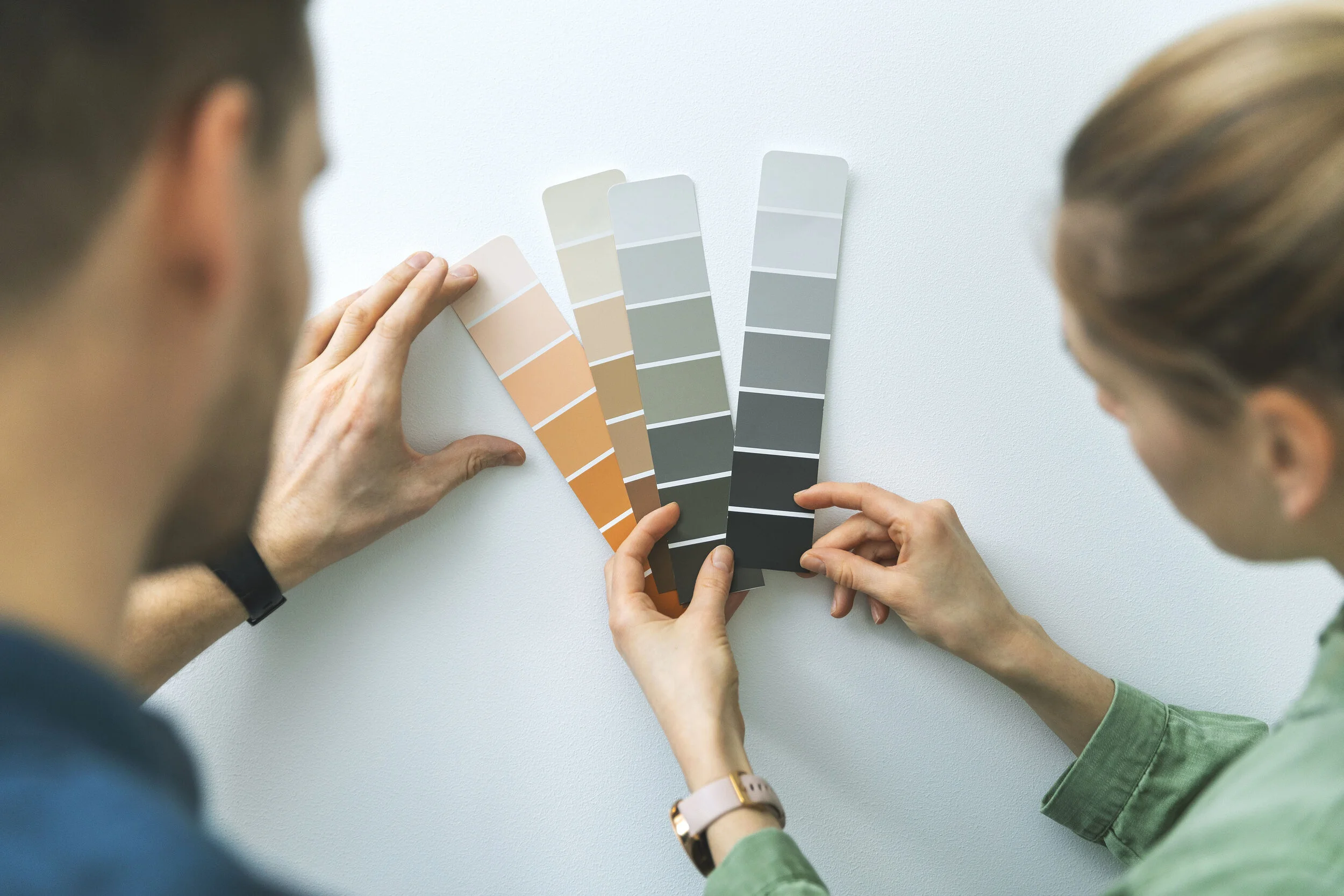Paint 101
Paint can be complicated! In a nutshell, you don't know what you don't know. Hopefully, this blog post will be of some assistance in understanding your choices! The first step is working through the different types of paint and where to use them.
Flat Paint
Most commonly used for interior walls and ceilings. Flat paint has no sheen and is the easiest paint to touch up. Flat paint can handle light cleaning but not aggressive scrubbing. The best thing about flat paint is how quickly it dries. It is water-based so you can apply multiple coats in one day.
Satin Paint
Satin paint is a water-based paint that has a slight sheen. Other than that, it shares flat paint's characteristics. Satin paint is recently available in the anti-scuff finish for use in areas where wall washing may happen more often.
Eggshell Paint
Commonly used in bathrooms due to the humidity, eggshell paint has a medium sheen that makes it easy to wipe down and seal out moisture even though it is water-based. Eggshell paint, due to it's sheen, will highlight imperfections in the drywall so make sure your drywall is floated properly prior to painting.
Semi-Gloss Paint
Semi-Gloss is an even higher sheen than eggshell. After that distinction, it shares the same characteristics as eggshell except it is oil-based. Semi-gloss is most often used on trim, doors, and cabinets.
Gloss Paint
At the highest sheen level, this paint is sometimes used in lieu of semi-gloss for its highly protective finish and a high sheen. It shares all the same characteristics as semi-gloss.
The next level of understanding is to know that all paint brands have their own quality levels and they are noted differently. As a company, FTC using Sherwin Williams paints exclusively, so I will use their information to show you the different levels. Sherwin Williams Promar line consists of 200, 400 & 700 level paints. The 200 line has water-based latex with VOC (a volatile organic compound that causes the lasting smell) less than 100, 200 oil-based (semi-gloss/gloss), and 200 water-based no VOC.
The 400 line has no VOC water-based latex paint and an oil-based semi-gloss. The 400 line is considerably thicker than the 200 and will cover with fewer coats. The 700 line has a water-based latex with a VOC of 50 and is rated for commercial applications. Depending on the brand you choose, you will find similar ratings and uses. Typically, the lower the rating, the less cost per gallon. Also note, if you find a color in one brand but you like the base paint type in another brand, you can take the color for one brand to pretty much any vendor and they can mix that color in their proprietary paint.
The last thing I will cover in this month's blog will be details about repainting existing paint with new. It's important to identify what paint is currently on the walls (oil-based or water-based) before you repaint. If you are unable to do so, your best bet is to prime the walls prior to adding your colored paint. If your walls have flat paint on them, you can put any of the other sheens over the top without incident. However, if your walls have oil-based, you need to match it or go up on the level of sheen. So for example, if your walls have water-based paint, you can repaint with water-based or oil-based. If you have oil-based, you will need to repaint with oil-based or prime first.
There is a lot more to share on paint but we will leave it here for now. Keep your eye out for Paint 2.0 in the future.

